No Fault Found (NFF) is a standard term used in aviation, and typically happens when a part removed from an aircraft, due to poor performance, is sent to an MRO repair shop for testing. The repair shop cannot replicate or find the problem. The MRO shop tests the unit and if it passes all tests, the unit is sent back to the operator as NFF.
Now, the same unit could continue having problems that cannot replicate on the bench. Many times, micro-breaks, bad soldering, vibrations, could create intermittences that are undetectable by standard equipment. The unit is removed and sent back to the MRO shop and the cycle continues. Airlines often-times have a policy to retire the unit after three NFF test results. This unit will be considered “rogue” or unserviceable.
Aircraft OEMs, also have processes to deal with rogue units.
At the MRO level, depending on the Component Maintenance Manual (CMM) for the particular part, Original Equipment Manufacturers (OEM) will provide a set of instructions on how to perform a deep test on the unit. This will entail doing a temperature test and a vibration test to capture the anomaly (“bake and shake”).
It is highly probable that after performing the deep test, with environmental stimulus (“baking and shaking”), the unit is returned to service and continues to present problems.
What are the different intermittence stages in No-
Fault Founds?
One of the possible reasons that vibration and temperature chambers still would not be able to replicate the problem is related to the sensitivity of the equipment. There are three stages in which intermittences occur.

Stage 1 Stage 2 Stage 2 intermittences graph for NFFs
- Stage-3 hard or semi-hard failures can be captured by most test equipment on the bench or the line.
- Stage-2 faults that manifest intermittently in operation, but pass the deep test, and labeled NFF.
- Stage-1 random low-level nanosecond micro-breaks or noise, likely not operationally evident.
Equipment capturing Stage-3 hard or semi-hard fault is not built and not capable of capturing Stage-1 or Stage-2 intermittent faults where these micro-breaks are detected.
Micro-breaks could occur as follows:
• Cracked solder joint.
• Broken wire.
• Loose crimp connection.
• Loose or corroded wire wrap.
• Corroded connector contact.
• Sprung connector receptacle.
• Deteriorated wire insulation.
• Hairline crack in printed circuit trace.
• Unsoldered connection.
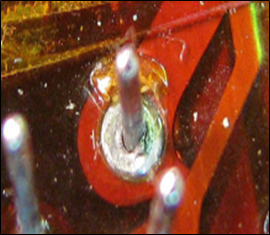 Micro-breaks due to corrosion. Source: Universal Synaptics |
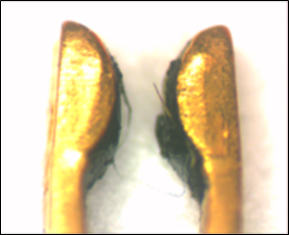 Micro-break due to bad contact. Source: Universal Synaptics |
Scanning each circuit with minimum sensitivity will not detect nanosecond dropouts, nor will it be able to isolate a fault that is random in nature, thus, missing the moment in which the intermittence occurs.
What technology captures Stage-2 Intermittences?
To be able to capture Stage-1 and Stage-2 intermittences the system needs to be listening to all circuits simultaneously at all times with nanosecond sensitivity.
Standard systems use a scanning method, latching to each circuit independently one at a time or a few at a time. This method will not capture intermittence, due to the random nature of occurrences and the fact that they could appear after the latching of a prior circuit.
By testing all circuits at all times, the probability of detection increases in such a way that no defects are missed.
The images below show conventional Automatic Test Equipment (ATE) testing each point, versus Intermittent Fault Detection (IFD) testing all points simultaneously and continuously.
|
|
|
NFFs severely affect any airline operation, for example:
- Significant impact on aircraft downtime and operation interruption.
- Recurrent maintenance cost on the same unit.
- Unit scrapping cost after multiple failures and NFF results.
- Stock depletion to remediate the maintenance problem. This could subsequently affect operations by not having minimum stock required.
- Inventory cost, and so on.
What are aircraft operators considering to detect NFFs?
Airlines and operators are starting to understand that detecting intermittence at levels before reaching the common Stage-3, drastically mitigates NFFs, increases aircraft performance, minimizes unscheduled events and unexpected costs.
Universal Synaptics is a pioneer in wiring fault detection at Stage-1 and Stage-2 levels focused on intermittent faults eradication. Their Intermittent Fault Detection & Isolation System (IFDIS 2.0™), and the Portable Intermittence Fault Detection (PIFD™) are capable of detecting and isolating random intermittent faults in the nanosecond range.
The PFID is in the Boeing Aircraft Maintenance Manual (AMM) under procedures for “Intermittent Wiring and Check- Special Detailed Inspection” for all Boeing aircraft.
The PIFD is a portable unit with the capacity to test 128,256 or 512 points. Recently added in the Boeing Aircraft Maintenance Manual (AMM) under procedures for “Intermittent Wiring and Check- Special Detailed Inspection” for all Boeing aircraft, makes it an ideal tool for troubleshooting on and off-wing complex wiring systems.
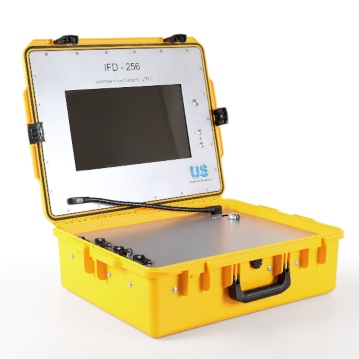
Portable IFD- Source: Universal Synaptics
The IFDIS 2.0™ is a stand-alone unit, capable of testing all points simultaneously with the capacity to handle 1280 points incrementally in a modular environment. IFDIS 2.0™ connected to an environmental chamber and vibration table is capable to stimulate components as if in flight with a nanosecond precision to capture Stage-1, and Stage-2 intermittent faults.
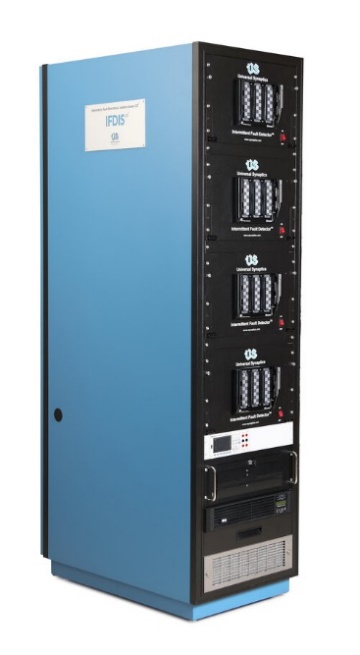
IFDIS (2.0™ ) capable of detecting intermittent faults, the primary cause of NFFs Source: Universal Synaptics
How does an airline benefit by finding NFFs?
A typical flight control computer has more than 500 electrical pins/points between the equipment and the chassis that connects it to the aircraft. Below is an image of a flight warning computer for an Airbus.

Back of a flight computer showing all the different electrical points.
Internally these units consist of several boards connected to a motherboard.

Source: Global Flight Control Computer Market, Global Flight Control Computer Industry: Ken Research researchforecast.com
MROs may swap and repair boards, but seldom test the motherboard hosting the cards. Leaving room for failure as the contacts of the motherboard could have corrosion, bad contacts, or undetected, lurking issues.
How does the IFDIS 2.0 ™ work?
The IFDIS 2.0™ solves this problem by mapping all the connections of the Unit Under Test (UUT), and simultaneously monitoring with sensitivity all test points and circuits, capturing and isolating where the intermittence occurs. Similar to having an oscilloscope on every circuit, set to monitor the precise moment when an intermittent disruption occurs.
The image below shows the setup of the IFDIS 2.0™ with an environmental chamber and vibration table.
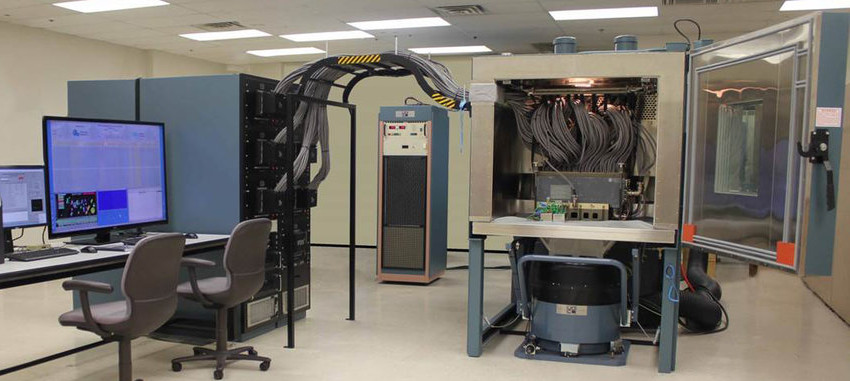
IFDIS 2.0 with environmental chamber and vibration table. Source: Universal Synaptics
The example Fault Isolation Graphic below will inform the operator what connection failed to allow for surgical repair of the intermittent fault(s).

Fault Isolation Graphic of a Unit Under Test (UUT) Source: Universal Synaptics
Currently, IFD technology is used by the United States Department of Defense (DoD) on several programs such as the F-35, the F-16 , F/A-18 and other weapon systems. It is approved by Lockheed Martin and Boeing recently approved the Portable IFD in their Aircraft Maintenance Manual (AMM) for all Boeing commercial aircraft. Barfield, supports the commercial aviation market of this technology.
Conclusion
In summary, airlines are starting to implement IFD technology as the Return on Investment (ROI) is quantifiable with a short-term payback period. This new technology that detects intermittence faults of electrical system will drastically improve safety and minimize costs in aviation operations.





Recent Comments